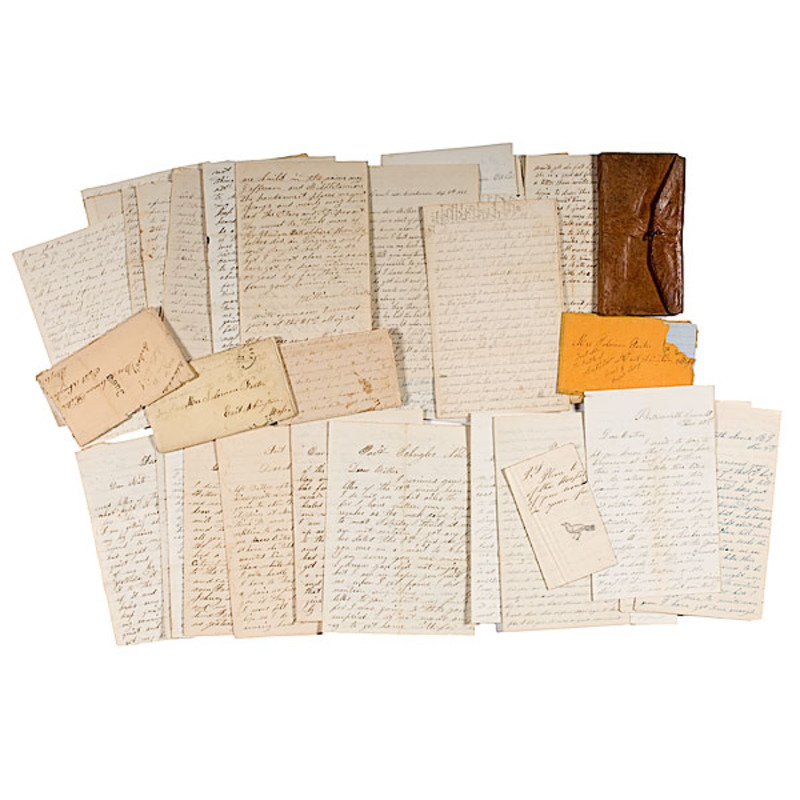1895, titled Map of trails that would probably be taken by Indians leaving Ft. Sill for Arizona, and signed by Scott at 1st Lt. with the further manuscript annotation Was drawn by a Mescalero Indian from Ft. Stanton. Name = "Dinero Boy" or "Little Money" who lives now (1895) on the Commanche Reservation at Quanah Parkers. "Dinero Boy" has a half brother among the Chiricahua Apaches Camp - Ka-ah-tenday Co. "I" 12th infty. Dinero-Boy has no adequate conception of what a mile is - he has been over both trails and is willing to guide soldiers to Fort Stanton. There is no wood on the Staked Plains but plenty of cow chips can be found for fuel. The map details several routes, and lists 25 points of reference between Forts Sill and Stanton, as well as approximate distances between. Probably drawn shortly after the Apache were moved from Mount Vernon Barracks, Alabama to Fort Sill in Oklahoma Territory, this map was almost certainly produced by Scott as a precaution against an outbreak. Scott, assigned to the 7th Cavalry after the Little Big Horn, he was later posted at Ft. Sill (1894-1897) and placed in charge of Geronimo's band. This map was found among the papers of General Thomas Ruger, who by this time in his career was Commander of the Department of the East. Scott (1853-1934) had a long, and exceptionally distinguished, career with the U.S. Military, serving 20 years on the Western frontier as a member of the 7th Cavalry. He was charged with marking grave sites of the fallen at the Little Big Horn, and interviewed many of the participants of the battle. He was involved in many of Indian Wars campaigns, and in 1890-91 was charged with suppressing the Ghost Dance. In 1892, he organized Troop L of the 7th Cavalry, and commanded it until it was mustered out in 1897, the last Indian troop in the Army. For a short period before the outbreak of the war with Spain, Scott was assigned to the Bureau of American Ethnology, preparing a work on American Indian sign language. He served as an administrator in Cuba and the Philippines Superintendent of West Point, and was for a time Ad-Interim Secretary of War. Provenance: Descended directly in the family of General Thomas H. Ruger
1895, titled Map of trails that would probably be taken by Indians leaving Ft. Sill for Arizona, and signed by Scott at 1st Lt. with the further manuscript annotation Was drawn by a Mescalero Indian from Ft. Stanton. Name = "Dinero Boy" or "Little Money" who lives now (1895) on the Commanche Reservation at Quanah Parkers. "Dinero Boy" has a half brother among the Chiricahua Apaches Camp - Ka-ah-tenday Co. "I" 12th infty. Dinero-Boy has no adequate conception of what a mile is - he has been over both trails and is willing to guide soldiers to Fort Stanton. There is no wood on the Staked Plains but plenty of cow chips can be found for fuel. The map details several routes, and lists 25 points of reference between Forts Sill and Stanton, as well as approximate distances between. Probably drawn shortly after the Apache were moved from Mount Vernon Barracks, Alabama to Fort Sill in Oklahoma Territory, this map was almost certainly produced by Scott as a precaution against an outbreak. Scott, assigned to the 7th Cavalry after the Little Big Horn, he was later posted at Ft. Sill (1894-1897) and placed in charge of Geronimo's band. This map was found among the papers of General Thomas Ruger, who by this time in his career was Commander of the Department of the East. Scott (1853-1934) had a long, and exceptionally distinguished, career with the U.S. Military, serving 20 years on the Western frontier as a member of the 7th Cavalry. He was charged with marking grave sites of the fallen at the Little Big Horn, and interviewed many of the participants of the battle. He was involved in many of Indian Wars campaigns, and in 1890-91 was charged with suppressing the Ghost Dance. In 1892, he organized Troop L of the 7th Cavalry, and commanded it until it was mustered out in 1897, the last Indian troop in the Army. For a short period before the outbreak of the war with Spain, Scott was assigned to the Bureau of American Ethnology, preparing a work on American Indian sign language. He served as an administrator in Cuba and the Philippines Superintendent of West Point, and was for a time Ad-Interim Secretary of War. Provenance: Descended directly in the family of General Thomas H. Ruger















Testen Sie LotSearch und seine Premium-Features 7 Tage - ohne Kosten!
Lassen Sie sich automatisch über neue Objekte in kommenden Auktionen benachrichtigen.
Suchauftrag anlegen